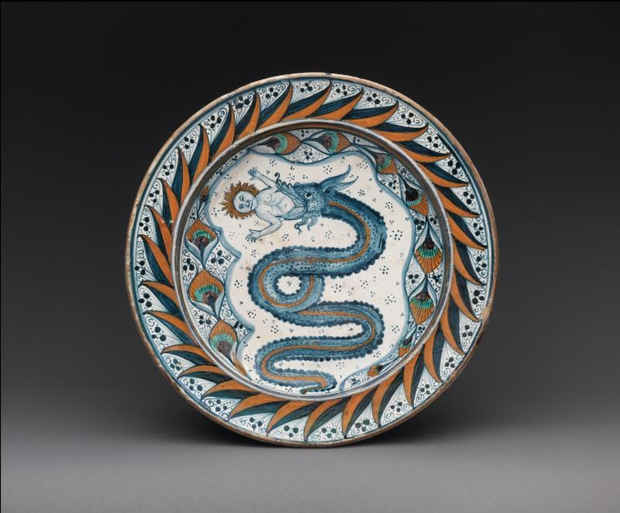“Maiolica” Exhibition
The Metropolitan Museum of Art

This event has ended.
Wrightsman Exhibition Gallery, Gallery 521
This exhibition of Renaissance maiolica from The Met’s world-renowned collection celebrates the publication of Maiolica, Italian Renaissance Ceramics in The Metropolitan Museum of Art, by Timothy Wilson. As Wilson has written, “Painted pottery, at its most ambitious, is a serious form of Italian Renaissance art, with much to offer those interested in the wider culture of this astoundingly creative period.” This creativity was applied to a vast range of practical objects. Renaissance Maiolica: Painted Pottery for Shelf and Table explores the relationships among decoration, function, and display so critical to maiolica and yet so different from those of canvas or panel paintings of the same period. It includes tableware and serving vessels, desk accessories, storage containers, devotional objects, as well as sculpture, all made in painted and tin-glazed earthenware.
The maiolica tradition flourished from the 15th to the 17th century. Italian potters transformed techniques that they owed to the Islamic world into something entirely unprecedented, and in turn laid the foundations for other tin-glazed pottery traditions in Europe. Renaissance potters and pottery painters exploited innovations of the Renaissance goldsmith, sculptor, and painter in what was a relatively humble medium. That it was owned by the social elite of Italy testifies, however, to its artistic value.
Renaissance Maiolica explores how the different functions of painted pottery dictated the ways it was seen and decorated. Groups of objects are installed in displays suggestive of their use. An assembly of storage jars give a sense of a pharmacist’s shop. Among the tableware on display are istoriato plates and dishes—their surfaces covered with scenes from mythology and ancient history—from important services commissioned by leading Italian families. The exhibition also shows maiolica-makers using ceramic, glaze, and pigments to compete with other art forms, including a Madonna and Child that imitates a framed panel painting. Also on view is a stunning Lamentation sculpture that likely once functioned as an altarpiece. It is the largest known example of sculptural maiolica to survive and has not been on public view in recent years.
The exhibition is organized by Peter Jonathan Bell, Assistant Curator in the Department of European Sculpture and Decorative Arts at The Met.
The exhibition is accompanied by a publication, Maiolica, Italian Renaissance Ceramics in The Metropolitan Museum of Art by Timothy Wilson, with an essay by Luke Syson, Iris and B. Gerald Cantor Chairman of the Department of European Sculpture and Decorative Arts at The Met. Timothy Hugh Wilson is Barrie and Deedee Wigmore Research Keeper in the Department of Western Art at the Ashmolean Museum, Professor of the Arts of the Renaissance, and Professorial Fellow (Garlick Fellow) of Balliol College at the University of Oxford. He has published widely on many areas of Renaissance art, including metalwork, prints and drawings, iconography and heraldry, and is above all a leading scholar of Renaissance ceramics, particularly Italian maiolica.
The publication is made possible by The Metropolitan Museum of Art’s Friends of European Sculpture and Decorative Arts, The Peter Jay Sharp Foundation, Marica and Jan Vilcek, and Ceramica-Stiftung Basel.
Media
Schedule
from October 20, 2016 to May 29, 2017